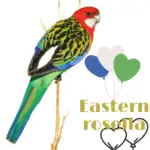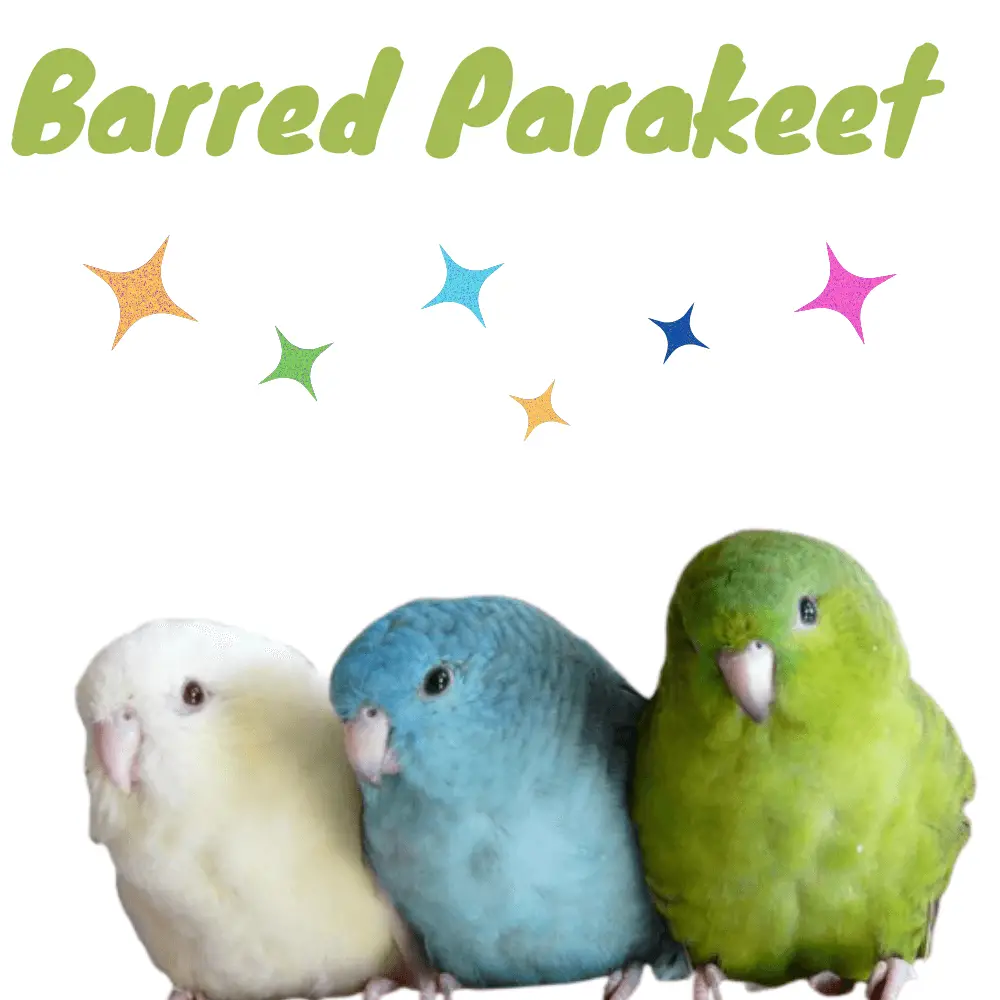
Barred Parakeet or Bolborhyncus Lineola or lineolated parakeet also Linnie parakeet,Ordre : Psittaciformes Famille: Psittacidae
Régime juridique : CITES Appendix II, free quota holding
Slight sexual dimorphism
Phenotype:
- Small green parrot, striped on the nape, back, and flanks.
- The male has epaulets and black central feathers
Character: a bird that can be kept in pairs or colonies and can easily cope with the presence of other species in the aviary.
Weight: 40 – 50g
Linnie
What does the name Linnie mean?
Lineolated parakeet
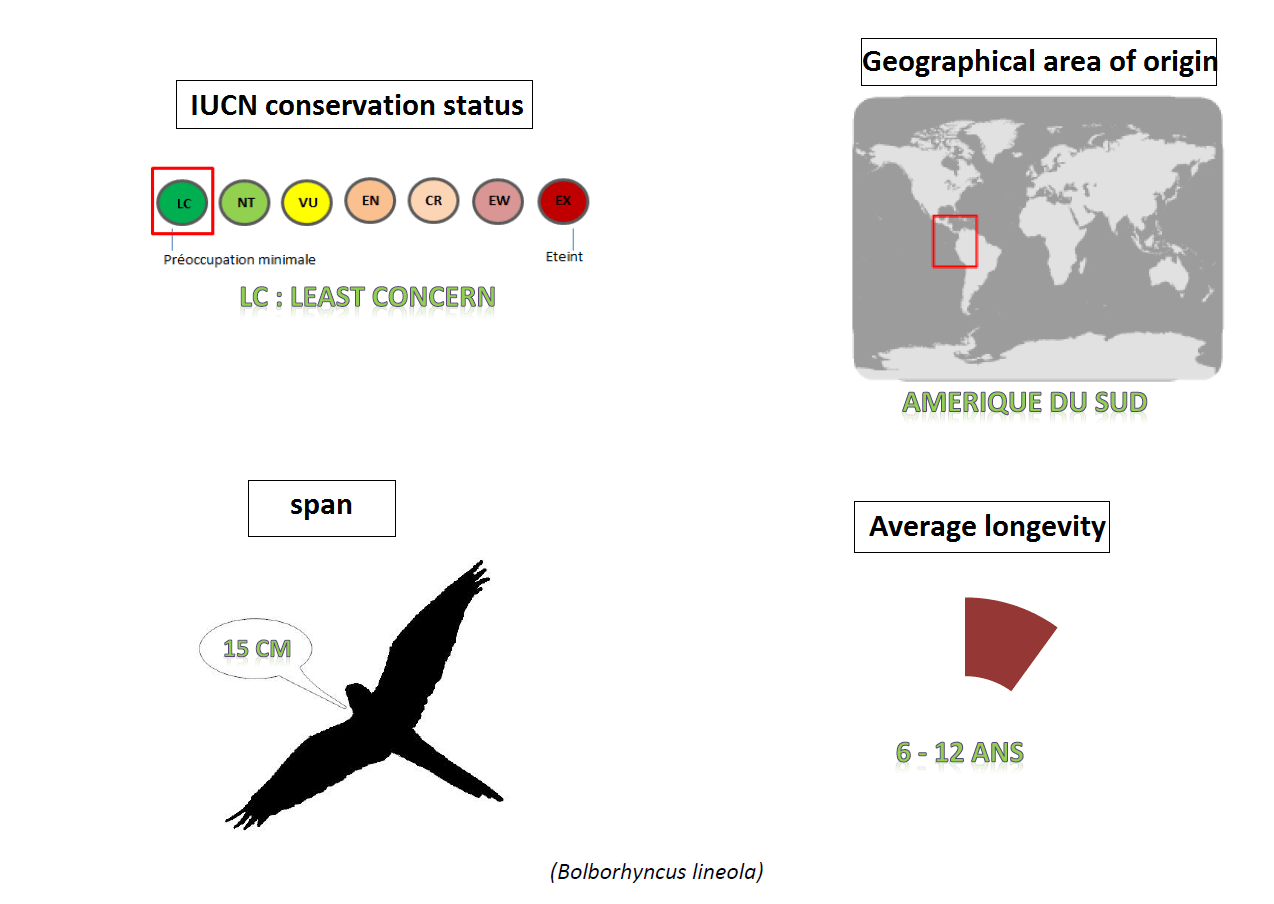
Catherine parakeets
The lineolated parakeet The barred parakeet is also known as Linnie or Catherine parakeet. lineolated parakeets have a reputation for being particularly calm and discreet birds. But it is preferable not to rely on this a priori because the interindividual variations are sometimes important.
These little parakeets are certainly not as restless as lorikeets, nor as talkative as lovebirds, but can still be heard very well when the mood takes them. Contact calls between congeners, in particular, can be piercing, but relatively rare when the birds live in groups and lack nothing.
They communicate a lot with each other through slight rattling and chirping. Small frequent, discreet, and even rather pleasant sounds.
They are often not very active during the day, indeed these small parrots are rather twilight. They get up early in the morning to explore their environment and to find something to eat. In the evening they are often still active, while the other species are already ready to fall asleep.
Barred parakeet
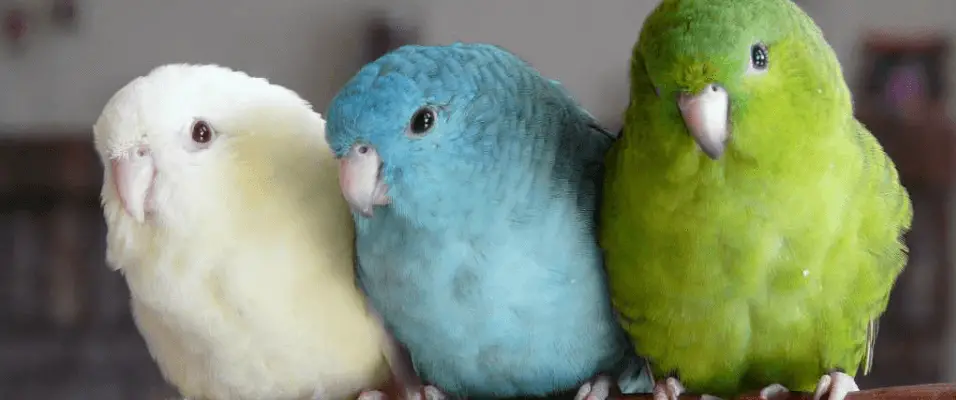
Linnie
Linnie or Catherines is “nosy”, they love to hide and rummage in the dark recesses. They also appreciate the activities on the ground, unlike their Amazon parrots cousins, who are more arboreal. During outings outside the cage, it is, therefore, necessary to watch them carefully since they can sneak into a corner and no longer give signs of life for a long time! They can even endanger themselves by trying to access narrow hiding places, behind furniture for example.
We often hear that they are birds who prefer to climb and walk rather than fly. Besides, there are many who believe them to be awkward in flight, but the reality is very different … Barred parakeets who have had the opportunity to exercise their flight from an early age are generally very skillful.
Their flight is fast, rather heavy, and buzzing, they can change direction very quickly, a little towards the hummingbird, even if the latter is much more enduring and flexible in its maneuvers.
Catherine parakeets have more difficulty flying long distances, but they can very well do so as their cousins show in the wild, traveling several kilometers each day in search of food.
Poor crossbreeding, intensive selection of mutations, and a cramped environment are often factors behind the difficulties observed in flight in this species. Many parakeets cannot lift their bodies, due to their excessive weight or the lack of training of the pectoral muscles from the age of flight. Climbing is not mastered by all individuals!
They like to climb, perch, literally walk along the branches, “hang” by the legs, upside down … so that the new owners are sometimes surprised and worried to see their parakeets settle in such positions, mostly slumped and leaning forward on their support. However, these are completely normal behaviors and signs of good health.

These little birds are very sociable and prefer the presence of many congeners outside the breeding period. The couples are also very close-knit, the partners are often pressed against each other, caressing each other’s feathers with their tails as a sign of confidence and relaxation. Cohabitation is not reasonable with other species of Psittaciformes, except perhaps cockatiels. Faced with other more lively and quarrelsome species, the Barred parakeet is no match.
They do not attack and are content to launch piercing cries as a defense, which is not the most effective strategy, especially against larger birds!
These parakeets are barely 16 cm, and yet do not seem to be aware of their small size. Besides, it takes a lot to scare them! Their resistance to stress makes this species particularly suitable for overcoming the constraints of captivity. We can approach them closely, even very fierce individuals, they wait until the last moment to finally shift slowly on the porch. The flight is a solution of last resort, particularly expressed when they are on the ground.
They seldom show suspicion when a new object is presented to them. They are rather curious, even if they can take some time before exploring.
Catherine parakeets are greedy birds, they rarely hesitate to taste fruits and vegetables, even when they do not know them. Their greed combined with their calm temperament can quickly lead them to overweight and lethargy. Caution is therefore required when it comes to feeding them, rich foods are only offered from time to time.
Lineolated Parakeet as Pets
SOURCE:Love of Pets
It is rare to observe them bathing, originating in wetlands, the Catherines are not indifferent to the rain. In this case, we can see them perching upside down, spiky feathers, and spread wings, in order to impregnate the plumage of water as much as possible. It is also not very waterproof, as in the majority of Amazonian species.
The shower is a special moment that birds particularly appreciate, and they make it known loudly!
It is quite common to describe Psittaciformes as destructive birds, but if there are a few species that are not very numerous, the Barred parakeet is one of them! They barely destroy destructible materials such as wood or plants, which is a considerable advantage in the development of their aviary.
This characteristic should not exempt them from offering them softwood toys, ropes, leather, and cardboard boxes that they will love to use as they please, and which are essential to break the boredom.
Are Bolborhyncus Lineola (Catherine parakeets) a particularly easy and undemanding species? Maybe … but there are still some details to take into account. If the breeders and owners could grant them a little “defect”, it would undoubtedly be their droppings!
This species is the size of a wavy parakeet, yet its droppings can easily compete with those of an African Grey Parrot! They are abundant, rather viscous, soft, and also … smelly! Indeed, their droppings have a smell, while this is often not the case in other Psittaciformes. A fairly strong odor of urea can quickly irritate sensitive nostrils and embalm the room after a few days. Some people have even separated from their Catherine for this sole reason.
They have significant physiological needs, despite their small size, which explains why droppings are abundant and frequent. Birds do not defecate at regular intervals and can retain themselves for a long time, which is a characteristic rarely observed in birds in general.
It is therefore important to be aware of this peculiarity, which requires cleaning their environment more regularly and airing often when the birds live indoors. A well-maintained aviary does not smell at all.
In return for this little inconvenience, these birds produce very little feather dust (talcum) causing allergies.
In short, if Catherine parakeets tend to make themselves known to exotic bird lovers, it is for good reason! It is rather easy to flourish and maintain them well if all the peculiarities of the species are taken into account and all their needs met.

Lineolated parakeet price
You can find Lineolated parakeet at, A breeder- Around € 40-50 A private individual- Around €30 A pet store- Around €65
Origins of barred parakeet
The barred parakeet is a small bird with hooked beaks. Native to Central America, more precisely Mexico, Panama, Colombia, Venezuela as well as Peru, the barred parakeet is also called the Catherine Parakeet and also listed as Bolborhynchus lineola in specialized books.
It is a bird belonging to the Family Psittacidae. This small parakeet usually has bright green plumage, striped with black. There are also birds of this species of other colors such as the blue Catherine Parakeet.
Physical characteristics of Catherine parakeet
The Lineolated parakeet measures 15 to 16 cm and its weight varies between 50 and 60 grams. Its rounded body has a small tail. Its round and black eyes are highlighted by its brightly colored feathers adorned with a dark mark on the shoulder. This allows it in its natural environment, very dense in plants, to camouflage itself to escape predators.
Over time, mutations have led to new colors such as lutino, turquoise, cobalt, olive green, dark green, and cremino. Recently, the appearance of a new mutation has made it possible to obtain the edged (translated into gray wings).
For this breed, the distinction between males and females is a delicate task, since sexual dimorphism is not very pronounced. Although some observations, such as body size or a number of plûmes, can determine the sex of a Catherine parakeet, this is not a scientifically accurate method. Endoscopy or DNA analysis is the only means that make it possible to establish with certainty the genus on which this bird depends.
Sexual maturity is reached around ten months, but it is advisable to wait until the age of one and a half years to attempt the first mating. The female, when she lives in her natural environment, nests in December in the hollow of the trees, which she arranges with plants and branches that she has previously transported in her feathers. In captivity, these small parakeets will breed in any season. Laying represents between 4 and 7 eggs, and the female incubates them for about 22 days.
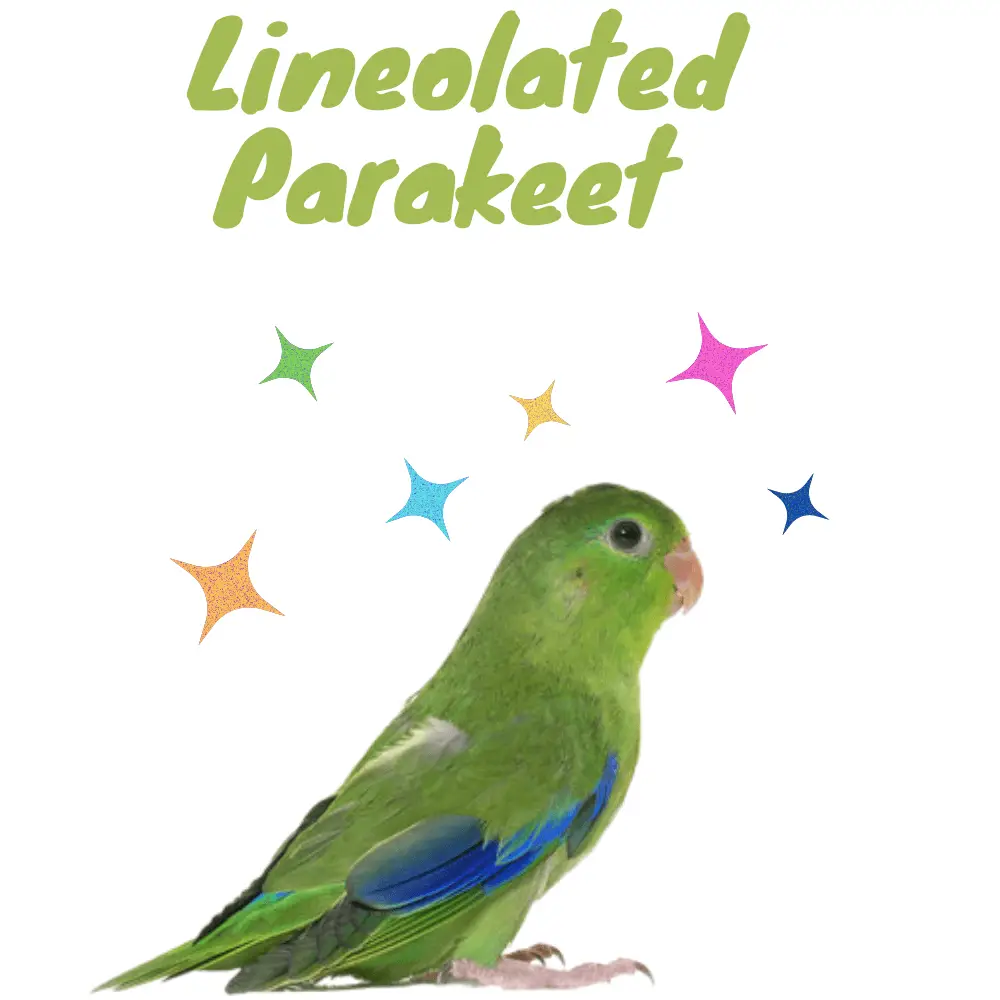
The character of Lineolated parakeet
What is the character of a Catherine parakeet? Is it easy to take care of a Linnie? The character of this little bird is calm and gentle and makes the Lineolated parakeet one of the favorite pet birds of many homes. Easy to tame, he is very dressed in the art of reproducing sounds and can even, with a little perseverance, learn songs.
Very dressed, he loves to climb and take advantage of play to perform all kinds of acrobatics. Moreover, he preferred to move by flying only when necessary!
Contrary to many misconceptions, this little bird will bind an unfailing attachment to the one who spends time in his company rather than to the one who will be content to feed him.
Well educated, once adulthood is reached, it can even be stroked at the level of the head without fear of being bitten. Here is a video presenting the behavior of the Parakeet Catherine.
The ideal habitat of Linnie
Which cage to choose for a Catherine parakeet? Ideally, provide him with a large rectangular or square parakeet cage leaning against a wall in a living room well-insulated, bright, and away from drafts. Avoid the kitchen or a room, the parakeet Catherine likes to see what is happening in her family. On the perch side, opt for those made of soft cement on top and rough below (also called therapeutic) rather than those made of plastic that tends to irritate their small feet.
Your parakeet should also be able to bathe 1 to 2 times a week with warm water, in a shallow dish, or in the mist from a vaporizer. This activity should be carried out under supervision to avoid taking place at night because by going to rest with the wet rains, your bird could get cold.
The diet of the Catherine parakeet
How to feed a Catherine parakeet? What does a Catherine parakeet eat? A true gourmand, the Lineolated parakeet eats a lot for a small bird!
Whether it is seed mixtures (millet, flax, sesame, saffron, canary seed, oats, buckwheat, and without sunflower), fresh fruits and vegetables (carrots, spinach leaves, cucumbers, corn, salad, cooked peas, cooked beans), or sprouted seeds, you will have to take care of your diet daily. Also note that you have to give them fresh water every day, because they are birds that drink a lot.
As you will have understood, adopting a pet bird is not a trivial choice. You need to make sure that you have enough time to take care of your Linnie. It is a long-term commitment that should not be overlooked. The Linnie is one of the most recommended birds for beginners, thanks to its calm and docile character, but it is not a plush toy for all that. To better understand the handling of your pet, do not hesitate to inquire about the gestures to know to approach the birds.

